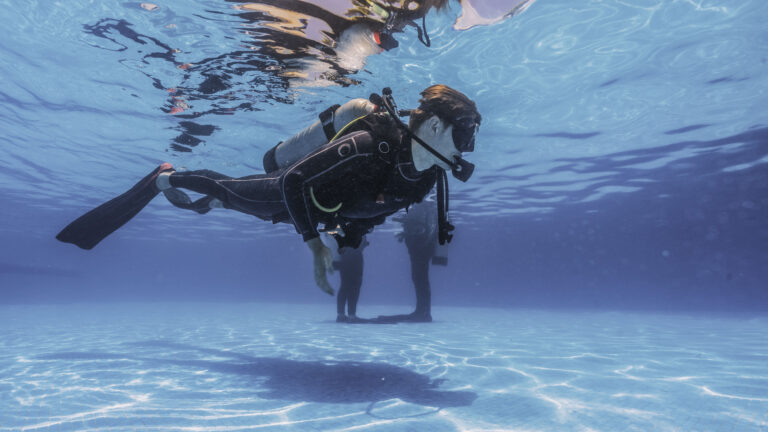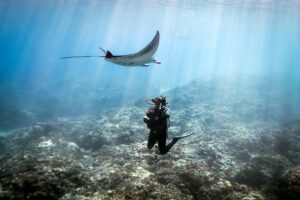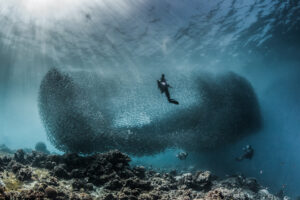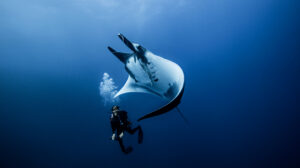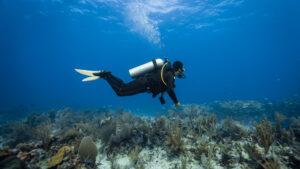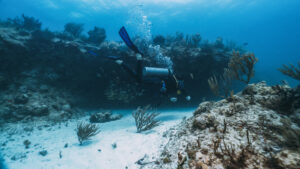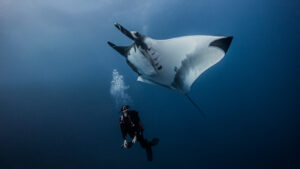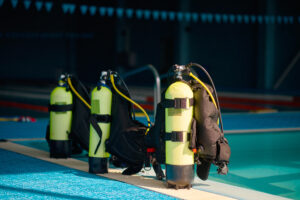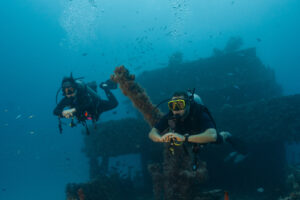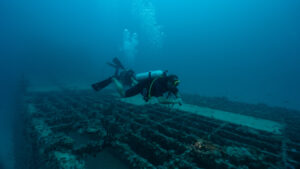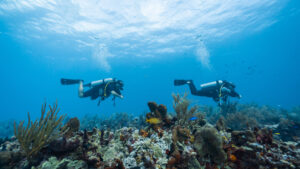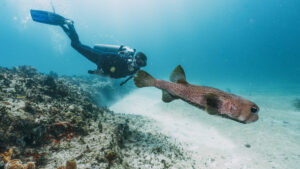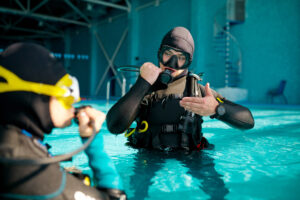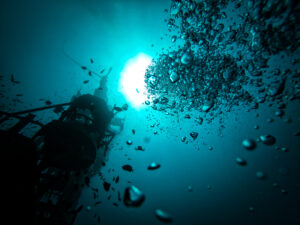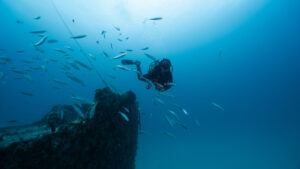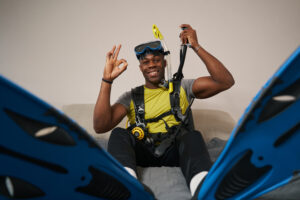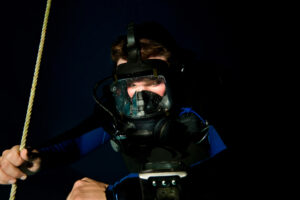What is Buoyancy in Diving?
Buoyancy, a fundamental principle in fluid mechanics, plays a crucial role in scuba diving, affecting everything from a diver’s comfort and safety to underwater navigation and marine life observation. Understanding and controlling buoyancy is essential for divers to achieve the perfect underwater experience.
Buoyancy is the upward force exerted on an object immersed in a fluid, opposing the weight of the object itself. This force is primarily determined by the object’s volume, density, and the fluid’s density. In scuba diving, buoyancy is a key factor that determines whether a diver sinks, floats, or remains at a specific depth in the water.
Types of Buoyancy
Positive buoyancy
When an object is less dense than the fluid it displaces, it experiences an upward force that causes it to float. This occurs when the weight of the displaced fluid is greater than the object’s weight. In scuba diving, divers with excessive positive buoyancy struggle to descend and maintain a stable depth.
Negative buoyancy
Conversely, an object is negatively buoyant if its density is greater than the fluid it displaces, causing it to sink. The weight of the object surpasses the weight of the displaced fluid, producing a downward force. Divers with negative buoyancy have difficulty staying off the bottom and may experience rapid, uncontrolled descents.
Neutral buoyancy
An object is neutrally buoyant when its density equals that of the fluid it displaces. The weight of the object and the displaced fluid are equal, resulting in no net force, allowing the object to remain at a fixed depth without sinking or floating. In scuba diving, achieving neutral buoyancy is a primary goal, allowing divers to hover effortlessly in the water column.
Factors Affecting Buoyancy in Scuba Diving
Body composition
A diver’s body composition, including fat, muscle, and bone densities, influences their natural buoyancy. Fat is less dense than water and contributes to positive buoyancy, while muscle and bone are denser and create negative buoyancy. Individual divers must adjust their equipment accordingly to achieve neutral buoyancy.
Exposure suit
Wetsuits and drysuits provide thermal protection and influence a diver’s buoyancy. Wetsuits, made from neoprene, contain gas bubbles that increase positive buoyancy. Drysuits, with trapped air for insulation, can create either positive or negative buoyancy, depending on the amount of air added or released by the diver.
Scuba equipment
Diving equipment, such as cylinders, regulators, and accessories, can affect buoyancy. Steel cylinders, for example, are negatively buoyant, while aluminum cylinders are initially negatively buoyant but become positively buoyant as air is consumed. Divers must adjust for these buoyancy changes throughout the dive.
Saltwater vs. freshwater
The density of water affects buoyancy, with saltwater being denser than freshwater. As a result, divers are more positively buoyant in saltwater and may require additional weight to achieve neutral buoyancy.
Buoyancy Control in Scuba Diving
Buoyancy compensator (BC)
The buoyancy compensator is a piece of equipment that allows divers to fine-tune their buoyancy by adding or releasing air. The BC, typically worn as a vest, has an inflatable bladder connected to the diver’s air supply. By inflating or deflating the bladder, divers can adjust their buoyancy to achieve neutral buoyancy or ascend/descend as needed.
Weight system
Divers use weight systems, such as integrated weight pockets or weight belts, to counteract their positive buoyancy. The amount of weight required depends on various factors, including the diver’s body composition, exposure suit, and the type of water. Proper weight distribution is crucial to maintaining balance and stability underwater.
Breathing control
A diver’s lung volume affects buoyancy, as the lungs act like natural air bladders. By controlling their breath, divers can make subtle adjustments to their buoyancy. Deep, slow breaths create more positive buoyancy, while shallow, rapid breaths can reduce buoyancy. However, it is essential never to hold one’s breath while diving, as it can lead to lung overexpansion injuries.
Trim and body position
Maintaining proper trim and body position helps divers control their buoyancy and minimize resistance while swimming. A horizontal position, with arms and legs streamlined, is the most efficient for swimming and conserving energy. Good trim also helps in achieving neutral buoyancy, as it distributes the diver’s weight evenly throughout the body.
Importance of Buoyancy Control in Scuba Diving
Safety
Proper buoyancy control is vital for diver safety. It reduces the risk of rapid ascents, uncontrolled descents, and collisions with the underwater environment. Good buoyancy control also helps prevent decompression sickness by allowing divers to maintain a constant depth during safety stops.
Conservation
Being neutrally buoyant minimizes a diver’s impact on the environment. Divers who maintain proper buoyancy are less likely to inadvertently damage coral reefs, disturb marine life, or stir up sediment, which can reduce visibility for other divers.
Air consumption
Divers who have mastered buoyancy control typically consume less air, as they expend less energy in maintaining their depth and position. Improved air consumption allows for longer dives and increases the overall enjoyment of the experience.
Underwater photography and videography
Neutral buoyancy is essential for underwater photographers and videographers, as it enables them to maintain a stable position, frame their shots, and focus on their subjects without constantly adjusting their depth.
Buoyancy plays a pivotal role in scuba diving, affecting a diver’s safety, comfort, and environmental impact. Mastering buoyancy control through proper use of equipment, breathing techniques, and body positioning enables divers to explore the underwater world with ease and minimal disturbance. As a fundamental skill in scuba diving, buoyancy control should be a priority for all divers, from novices to seasoned professionals, to ensure the best possible underwater experience.

